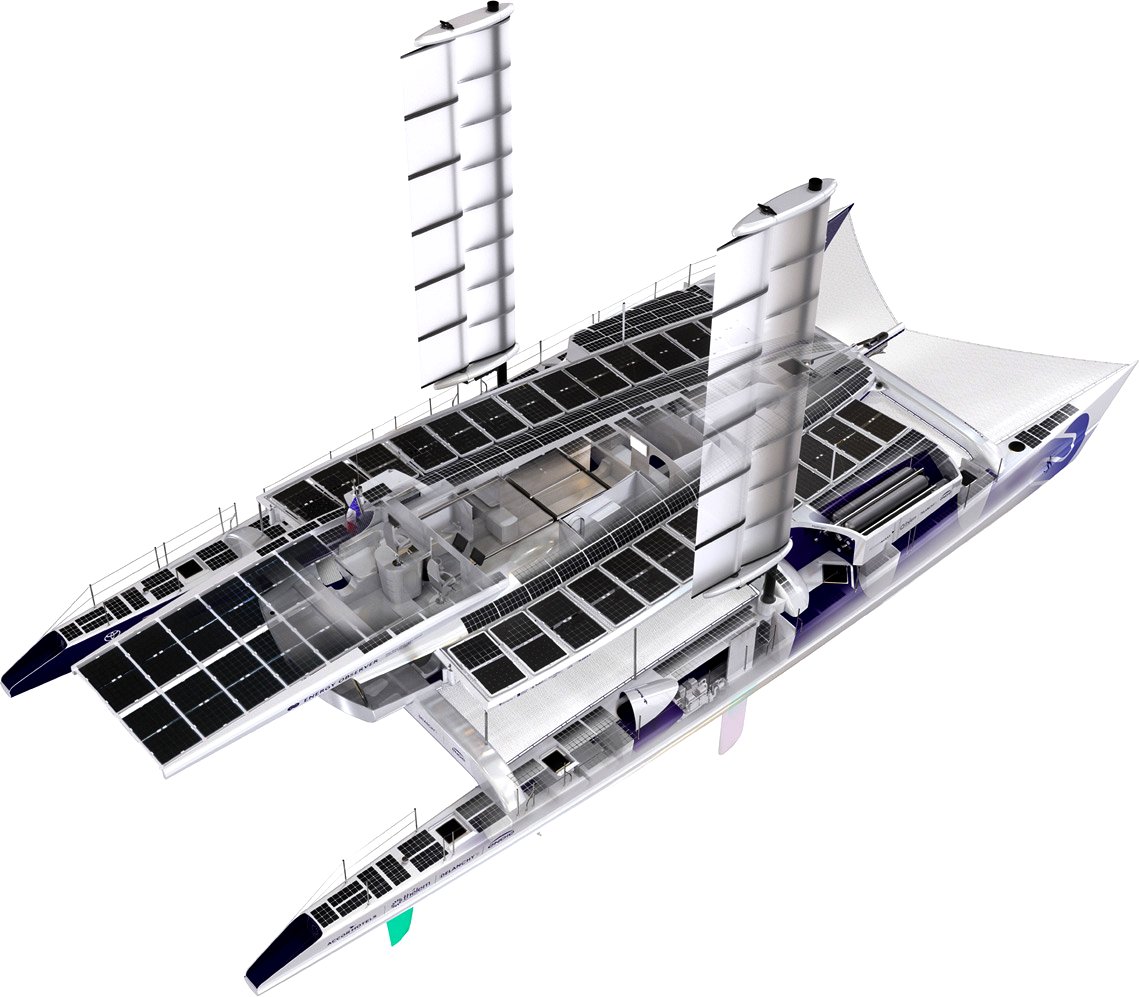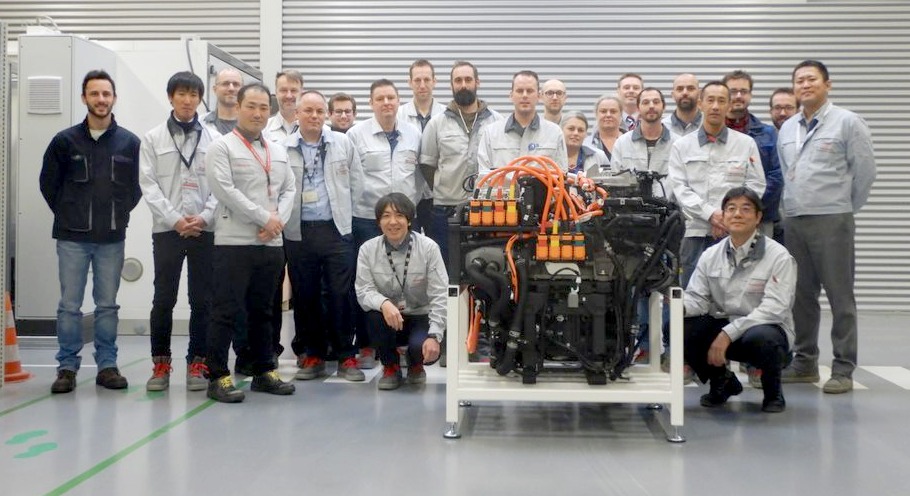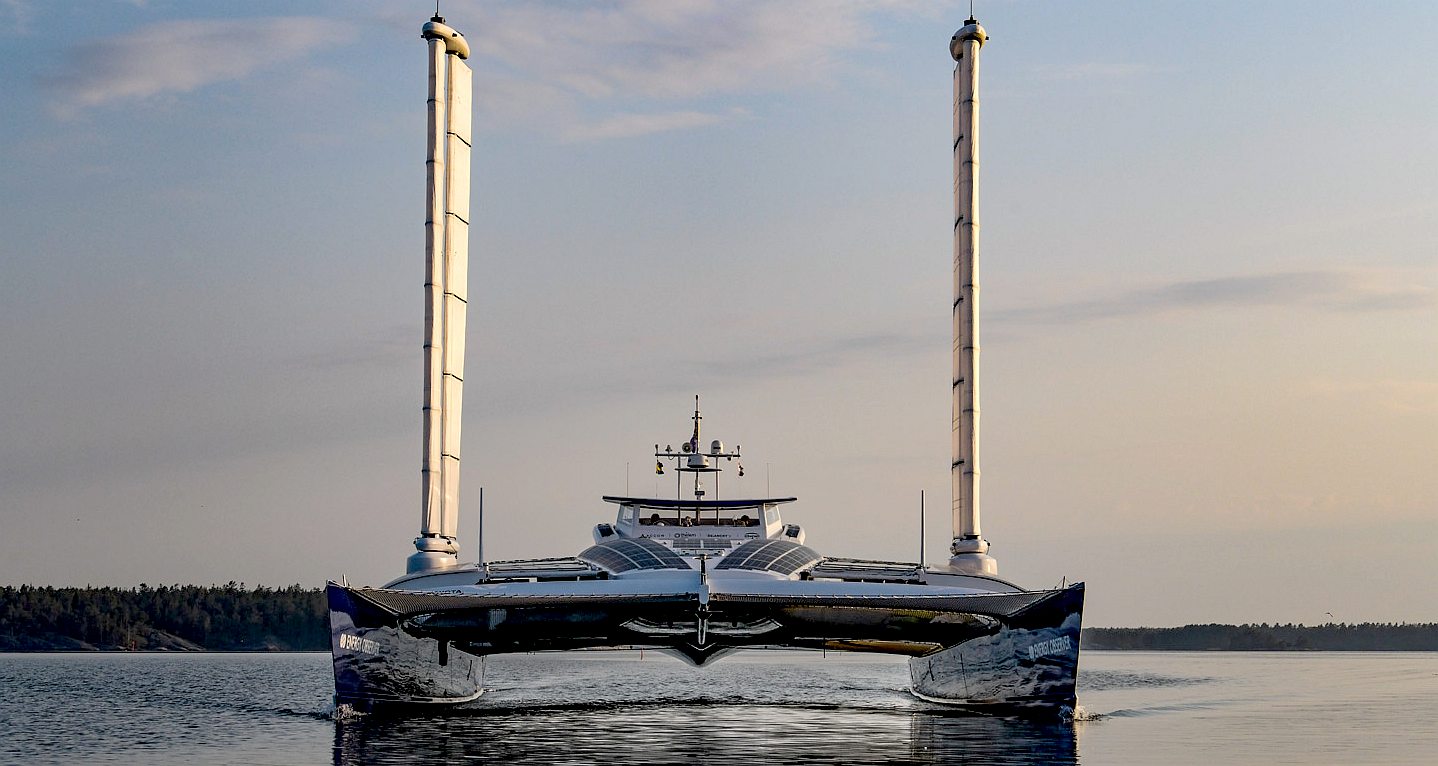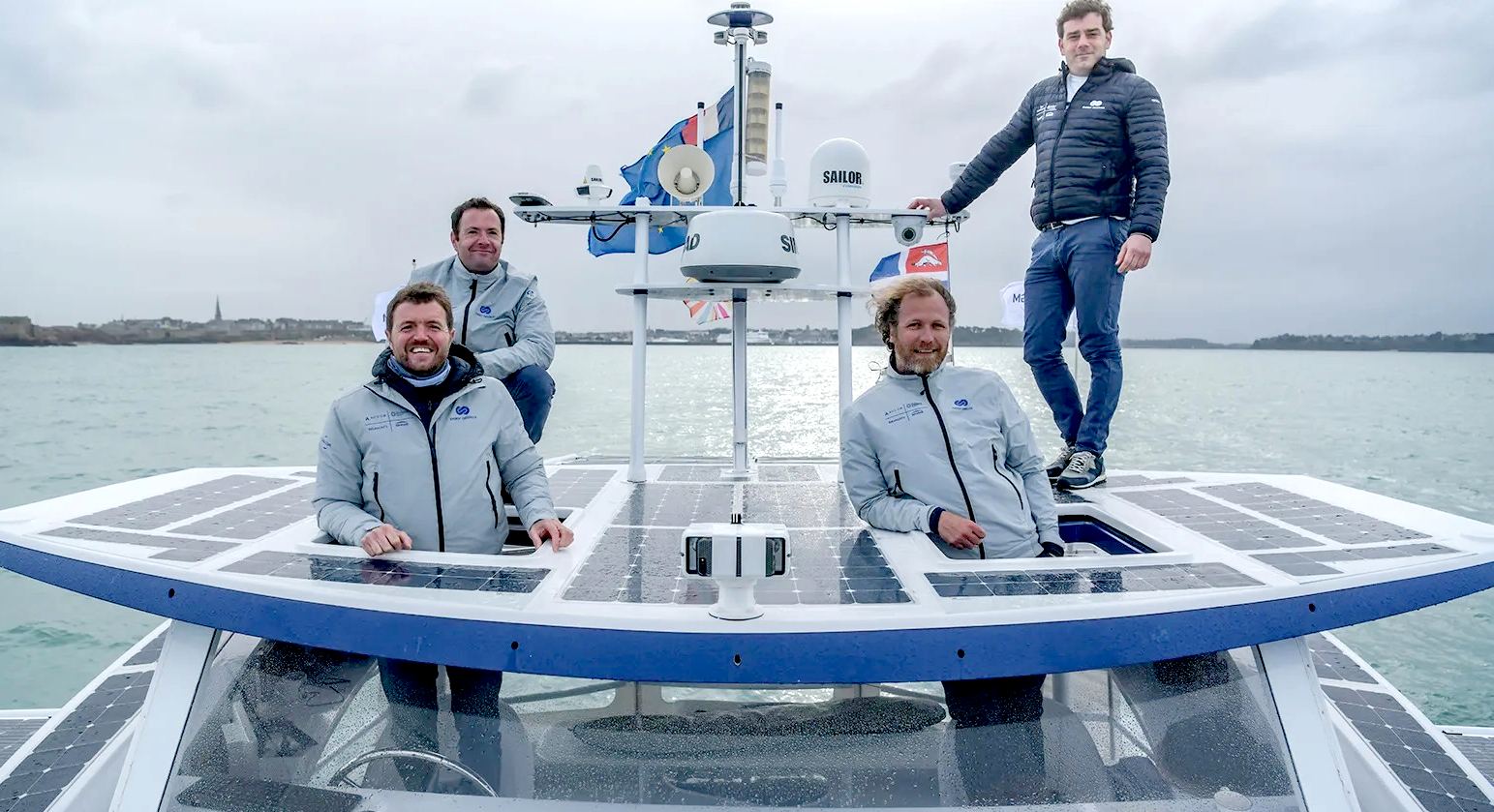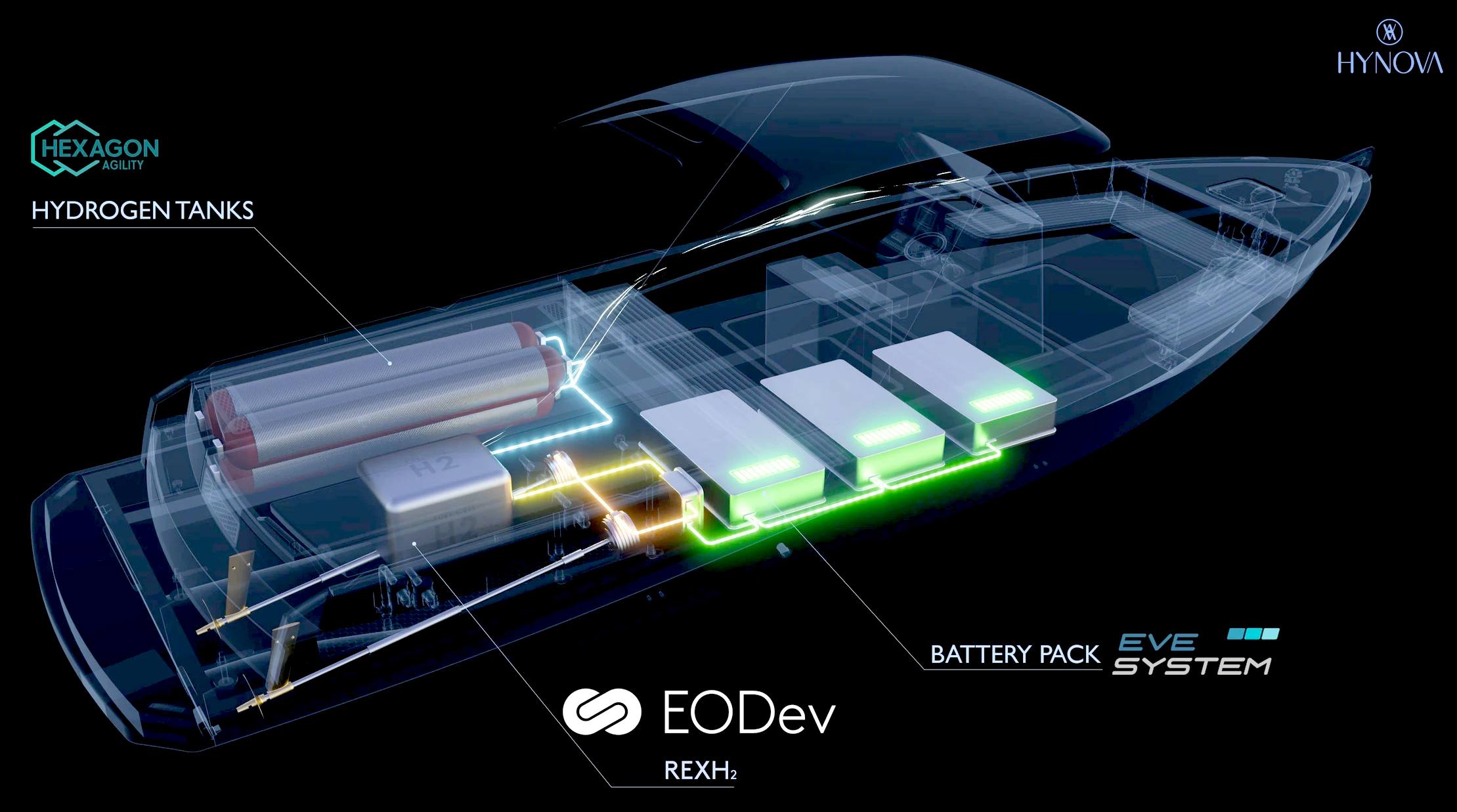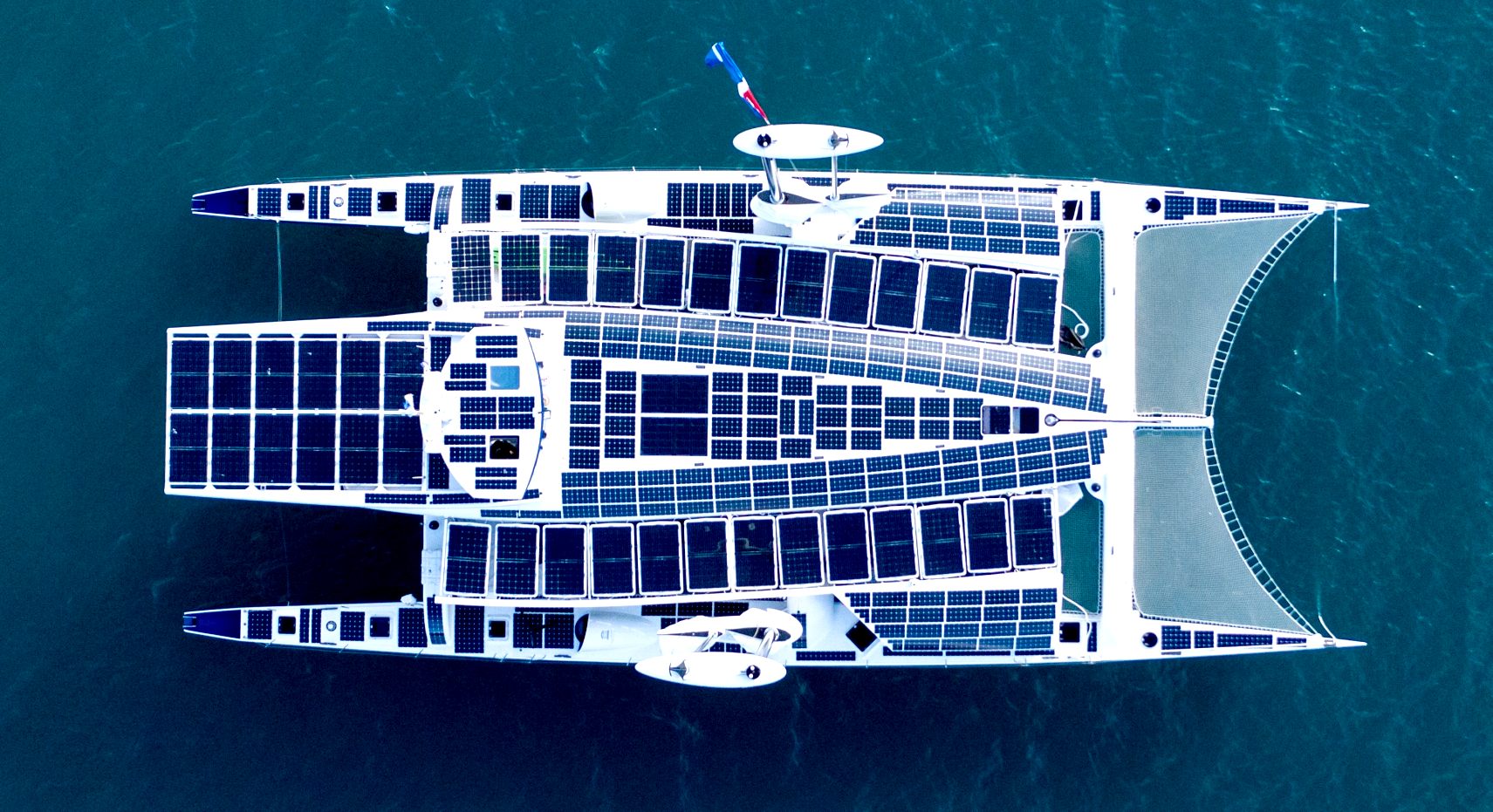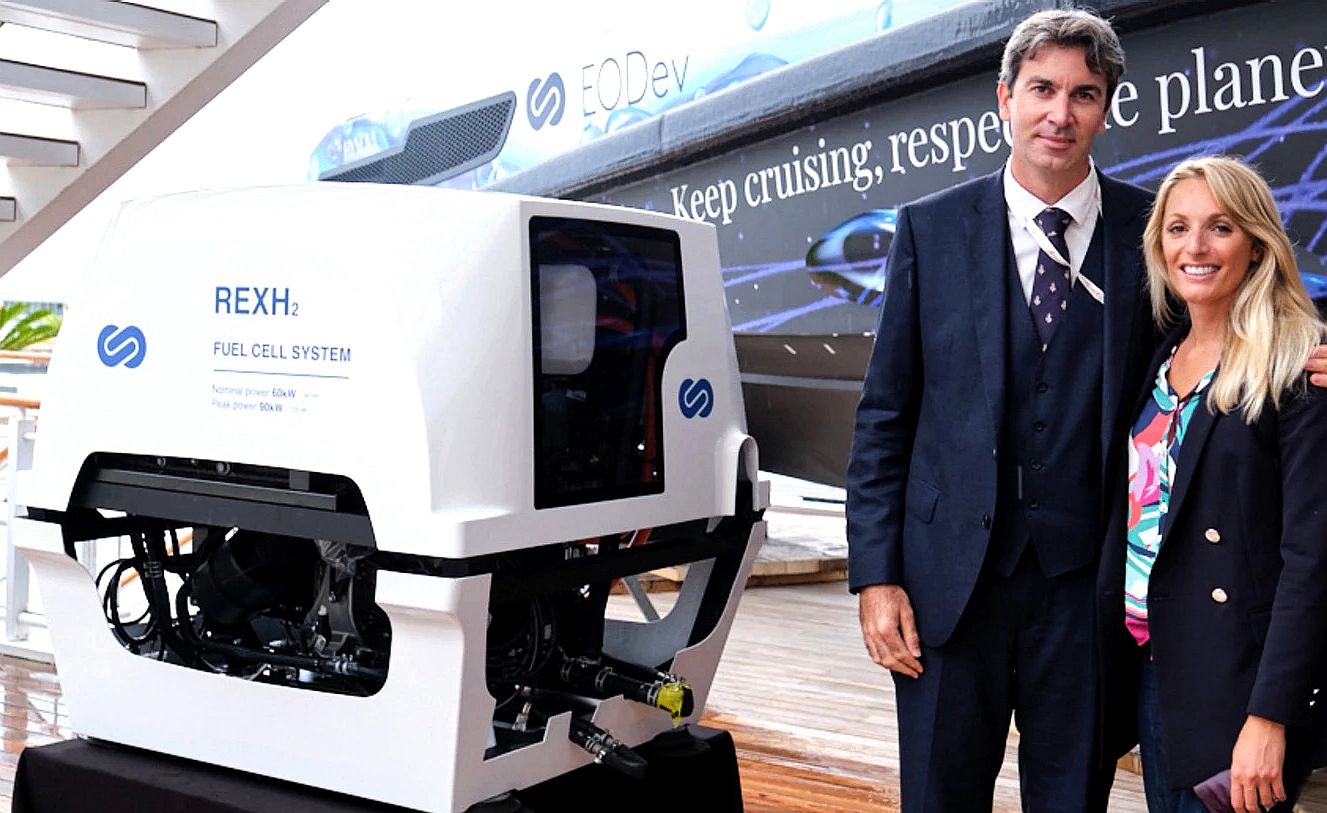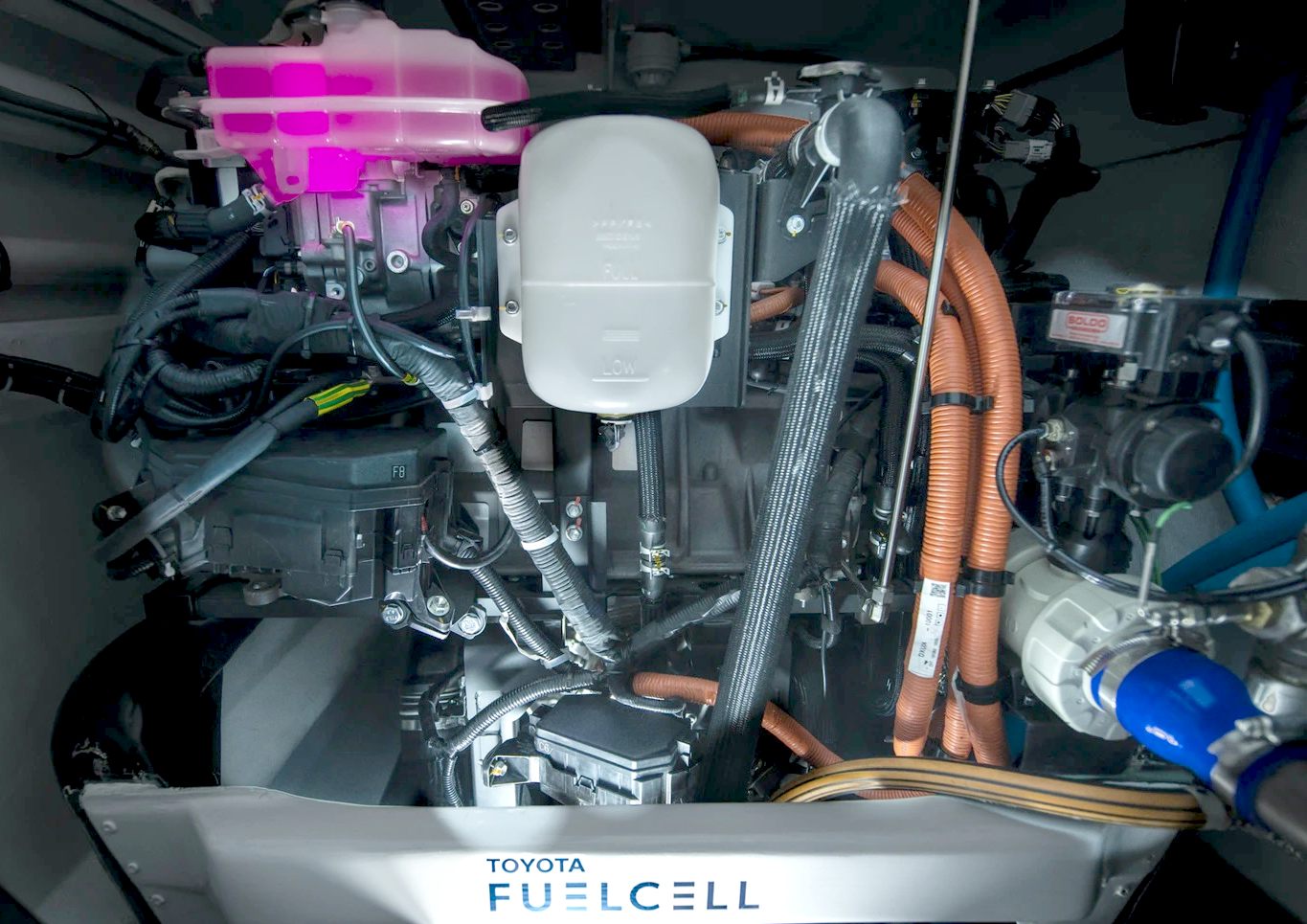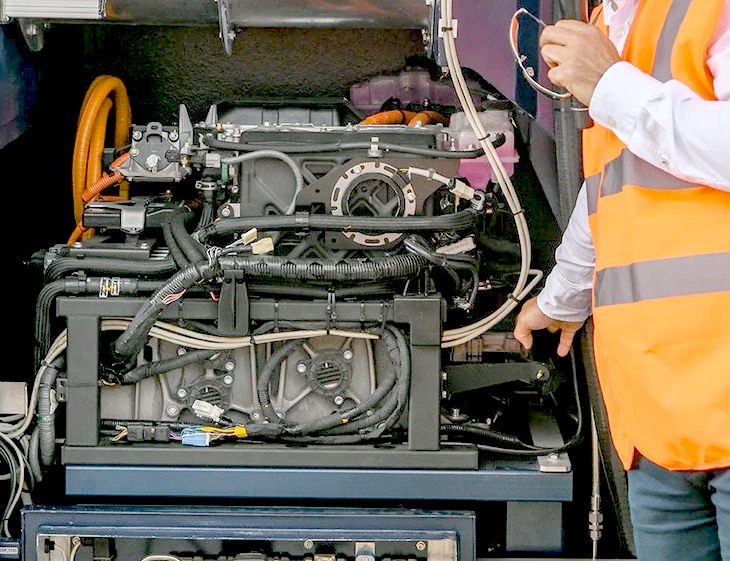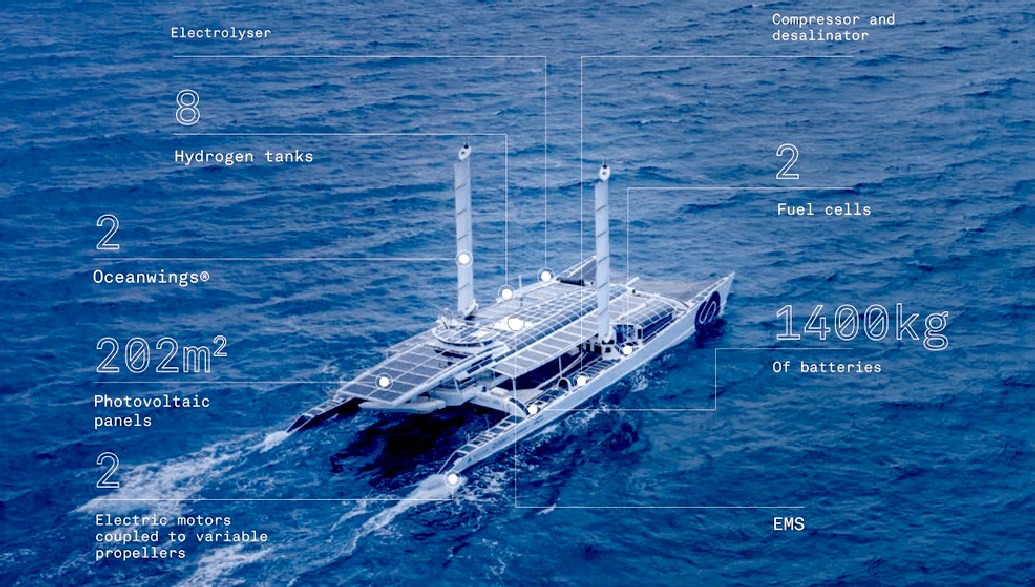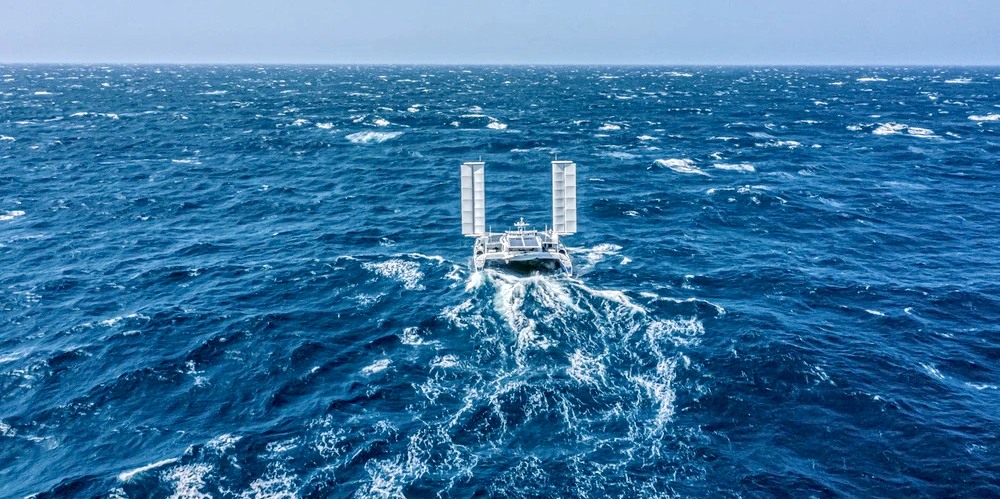|
TOYOTA REXH2 - HYDROGEN POWER PACK
Please use our A-Z INDEX to navigate this site or return HOME
|
|
GREEN HYDROGEN - A hydrolyzer and fuel cell energy storage combination. In 2017, the first hydrogen-fueled "marine" fuel cell was installed in France on board Energy Observer, for a series of stopovers, in France, then in Europe, thus leading our autonomous ship to the Arctic Circle in 2019. During this trip, Energy Observer was equipped with a fuel cell, developing a power of 30kW, designed in collaboration with the CEA. Although it is still on board and has fulfilled its role wonderfully during these first couple of years, the energy needs of the ship kept increasing as new technologies were installed to be tested and as the navigation periods extended.
2020, October 5th - The REXH2 is a modular maritime hydrogen power solution developed around Toyota's fuel cell technology. It has been succesfully tested in real open sea conditions aboard the Energy Observer boat for over more than 7,000 nautical miles including trans-Atlantic crossings. The
hydrogen-electric hybrid technology in the REXH2 makes silent maritime and river mobility without emissions of CO2 or fine particles possible.
EODev REXH2 SPECIFICATIONS:
Power from 70 kW to 1 MW
FICTION - A version of the Energy Observer features in 'Kulo-Luna,' the story of a giant humpback whale that fights against whalers of a future world where ocean plastic has made fish so toxic, that whaling has become legal again to feed starving fishing nations.
SUN & WIND POWER
When
launched in April 2017, the Observer claimed to be the first vessel in the world to both generate and be powered by hydrogen. She was developed in collaboration with engineers from the CEA-LITEN.
These specifications have since been changed along with lengthening of the hulls. Recently, 36.8m² of solar panel area have been added to the existing 165m² for 5.6Kw of additional power and a total surface area of 202m². As a result, the maximum power will be 34kWp (they have almost doubled the power since 2017). The Observer does not have sun tracking as with the Elizabeth Swann, hence there is room for improvement. The Observer has a power to weight ratio of 1.14 kW/ton. More than PlanetSolar's 1.05kW/ton.
Victorien Erussard, offshore racer and merchant naval officer, will lead the expedition, along with Jérôme Delafosse, professional diver and producer of wildlife documentaries. By their side, a team of over 30 people, architects, designers, and engineers, spreading from Saint-Malo to Paris to Grenoble, have been working since 2015 on refurbishing the catamaran.
The boat has
been lengthened four times and now displays the following dimensions:
TOYOTA BRUSSELS, 3 FEBRUARY 2020
Toyota has been involved in the Energy Observer project from the start, because of hydrogen being at the very heart of this amazing journey. During a six-year odyssey, which started in 2017, the Energy Observer team is navigating the first energy-autonomous hydrogen boat around the globe. The electrically propelled vessel of the future operates by using a mix of renewable energies and a system that produces carbon-free hydrogen from seawater.
The Toyota Fuel Cell System has proven its benefits already for many years in the Mirai, but more recently also in other applications such as buses and trucks. Using it for maritime transportation is again another step closer to the development of the hydrogen society. Toyota believes that hydrogen is the catalyst for energy decarbonisation and the technology acceptance can accelerate with the Toyota Fuel Cell System modular solution, which can be considered for a multitude of applications.
"We are pleased to be able to further demonstrate the versatility of the Toyota Fuel Cell System. Our European R&D team has worked hard with the team of the Energy Observer to create and install this module in the existing boat. This project shows that the Toyota Fuel Cell technology can be used in any environment and can be spread throughout many business opportunities. It is always inspiring to work with people who aim for the same goals and this project supports even more our vision for a hydrogen society."
Quote: Dr Johan van Zyl, President and CEO of Toyota Motor Europe
HYNOVA, NEW ERA - Electro-hydrogen hybridization is at the heart of the propulsion system of The New Era by HYNOVA Yachts, the first day-boat equipped with a REXH2® running on hydrogen and currently in approval phase. This is the brainchild of Frédéric Ménière, President of EVE System, Chloé Zaied, Managing Director of HYNOVA Yachts, and Romain Jallon, Director of Operations at EODev.
CONTACTS
EODev
Jean-Yves Jault
- Director, Corporate & Online Communication
ENERGY OBSERVER
Vincent Caumes
- Press Relations
Joséphine Guinard
- Press agent
For
questions related to the Odyssey: contact@energy-observer.org
https://www.energy-observer.org/
ENERGY OBSERVER'S LATEST ADVANCES & UPGRADES
The transition from a 30kW battery to the new 80kW fuel cell (60kW continuous) has not only doubled the capacities of the vessel, it has increased them exponentially. Indeed, it is important to understand that a REXH2 is, like the
Toyota Mirai, designed to operate in conjunction with one or more batteries. Although it is theoretically possible to ensure the propulsion of a small boat, having a simple and recurrent user profile, with the electricity supplied by a single
fuel cell, it is more pragmatic to couple it with batteries which will serve both as an energy reserve (storage) and as an energy source for the propulsion and the hotel load.
In
their view, the REXH2, in electric hybridization, or even in diesel-hydrogen-electric hybridization, appears today as the option most likely to reduce as much as possible
CO2 and fine particle emissions on board ships, looking to the future improvement of green hydrogen production and storage capacities, when it may finally be possible to run fleets of ships on hydrogen to meet all of the on-board energy needs.
GREEN HYDROGEN - Electro-hydrogen hybridization is at the heart of the propulsion system of The New Era by HYNOVA Yachts, the first dayboat equipped with a REXH2® running on hydrogen and currently in approval phase. We spoke with Frédéric Ménière, President of EVE System, Chloé Zaied, Managing Director of HYNOVA Yachts, and Romain Jallon, Director of Operations at EODev, to explain how electro-hydrogen hybridization is ideal for decarbonized maritime mobility.
Where
the ocean is a roller coaster, a fuel cell is a sensitive organ, which must be protected from any external dust and harmful particles. In February 2020
the REXH2 was ready to be implemented for its first transatlantic crossing, but was unfortunately delayed a few times as a result of capricious weather conditions across the
Atlantic.
GREEN HYDROGEN - The REXH2® fuel cell - compressor – inverter set, installed back in 2019, boasts a maximum power output of 60 kW (though it is operated at around 50% of its potential to optimize its output).
|
|
|
Please use our A-Z INDEX to navigate this site or return HOME
This website is Copyright © 2021 Jameson Hunter Ltd
|
